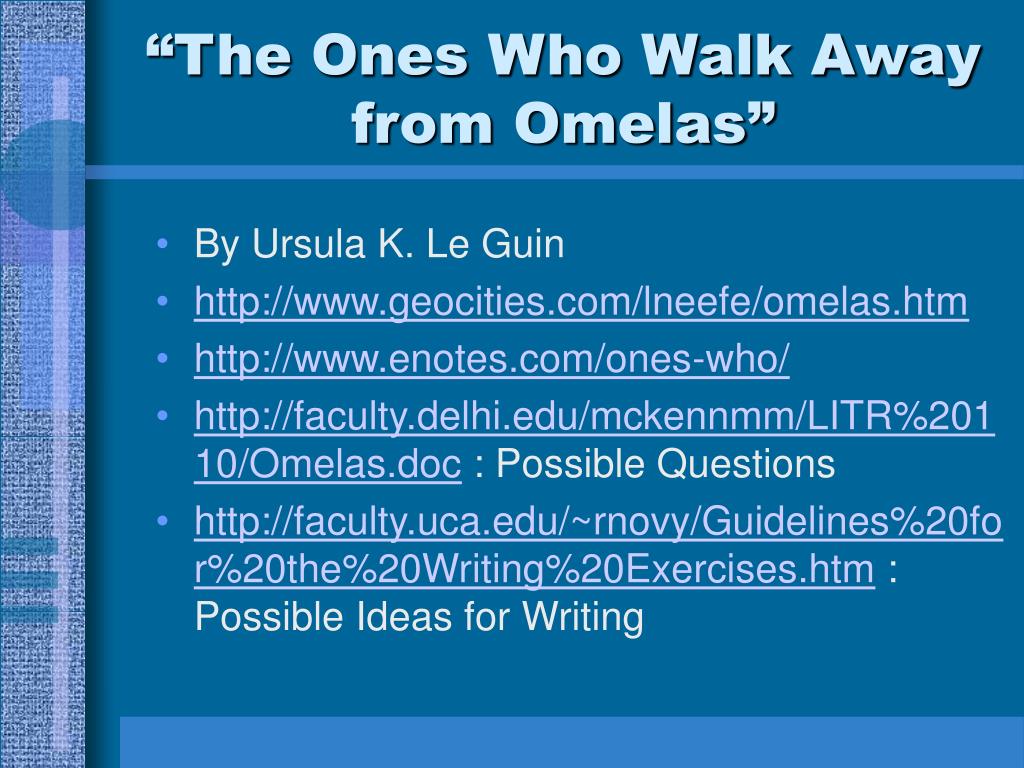

Yet it is their tears and anger, the trying of their generosity and the acceptance of their helplessness which are perhaps the true source of the splendor of their lives.” The people of Omelas choose to live as they had been before their realization, but they are almost obligated to be happy after witnessing the wretchedness of the child. Some of them go home to weep or rage, but in the end, they realize the “terrible justice of reality, and to accept it. One of the most poignant scenes in the story comes when the author describes how, when they are thirteen or fourteen, the young people of Omelas are taken to see the child in its prison. Must one suffer so all can be happy? Is torture “justified” if it will save lives? Most of all, is one life worth any more than another? It is the same as saying that we can trade one person for another, simply because one person is seen as lesser in the eyes of the world. Though the people of the city can justify the pain inflicted on the child, such a thing does not make it right.


Omelas, as seen from the outside, is a perfect world, but beneath the unspoiled exterior is a world built on the misery of a single person. Their choice personifies each individual's choice between living in the “light” of a society built on immoral ideals or rejecting that society in favor of uncertainty, a lack of social order, and “darkness.” However, there are those who refuse to live in such a society, and these are the ones who walk away from Omelas. They are able to justify the child's suffering and, in spite of it, or perhaps because of it, be happy, though it is terrible, conscientious happiness. The people of Omelas are aware of this, and believe, rightly or wrongly, that every bit of happiness in their lives depends solely on the child's misery. This child is never given a kind word, and is abused and looked down on. In order for everyone else to live as they are, joyfully, one single child has been made a scapegoat, and endures a horrible existence locked in a tiny room. Le Guin's story features a beautiful city where everyone is happy. If making one person suffer on the part of many is wrong, is it wrong to send a soldier off to war when he does not wish to go? When must one draw the line between holding onto our culture and stepping away from it all, in order to remove oneself from the actions of a society? The Ones Who Walk Away from Omelas is a story of society's debt to the individual-how a person must choose between a “civilized” society and one that condones torture.


 0 kommentar(er)
0 kommentar(er)
